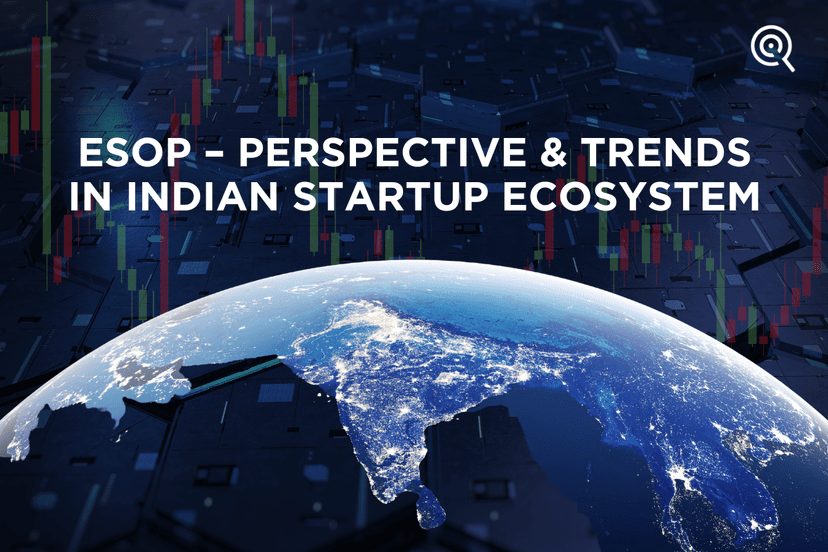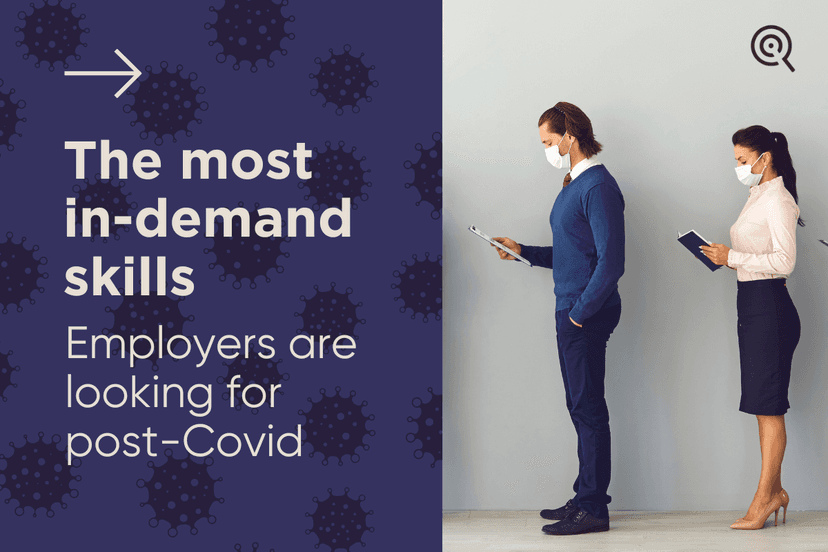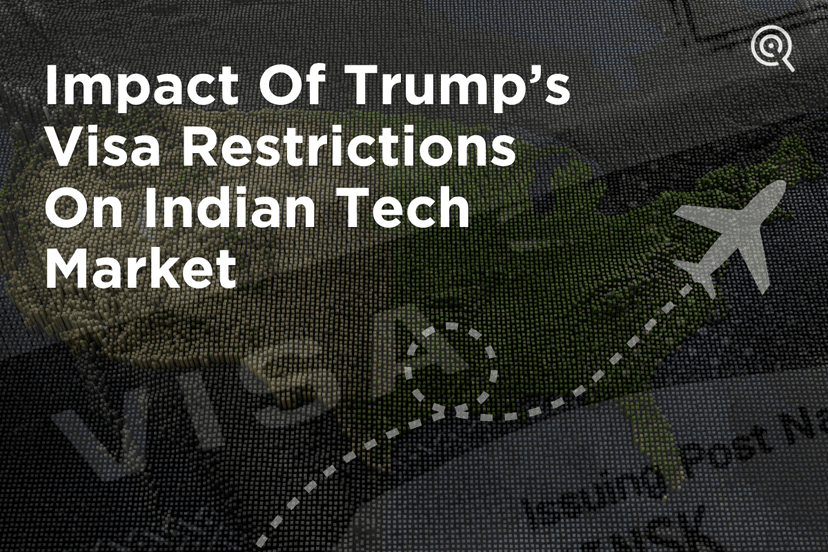Featured Articles
Subscribe to Our Newsletter
Receive exclusive updates and insights directly in your inbox.
Receive exclusive updates and insights directly in your inbox.

<p>Growing businesses require nimble skills; hence the importance of attracting & retaining skilled employees is crucial. Retaining talent with the correct employee incentives can help attain stability and long-term success. Several Indian companies are now resorting to <a href="https://www.purplequarter.com/all-about-esops-an-overview/all-about-tech/">Employee Stock Ownership Option Plan (ESOP)</a> to attract & retain talents. <h2><b>What is an Employee Stock Ownership Option Plan? </b></h2><p> ESOP is a type of employee benefit plan which is intended to encourage employees to acquire stocks or ownership in the company. In India, it is an incentive granted to the employees of the organisation to buy or subscribe to the shares at a determined price for the future. In simple terminology, it is a stock option plan. Initially, software companies introduced this plan to curb the aggressive ‘brain drain’ and for poaching high-performing candidates. <img class="alignnone wp-image-1586 size-large" src="https://admin.purplequarter.com/storage/posts/67fdd84b7456d-Blog-Cover.Esop_-1024x508.jpg" alt="Image" width="1024" height="508"> Employee expectations in terms of monetary rewards have evolved over time; people now seek newer incentives, salary is no more the sole driver. With ESOPs, an employee’s sense of belonging increases, and higher incentives ensure long term employment. The options also guarantee both financial security and job security for them. In the last few years, ESOP has grown and gained exceptional popularity and traditional exit strategies are fading away. Presently, 68% of the listed Indian companies and 29% of unlisted companies are providing ESOP advantages to their employees. </p><h2><b>ESOP benefits - From Employee Perspective</b></h2><p> Employee Stock Option Plan should be considered as a significant retirement asset for the employees who served in an organisation for a significant period. It is mainly designed for the employees who remain with the employer for a prolonged period and aids in the organisation’s journey. The stock is granted to the employee's account based on a contribution by the company, hence, the employee carries zero cost for the benefit. Also there is no tax hassle since the amount contributed by the employer or the income earned in that account is not taxed until they receive the distribution; a considerable advantage for employees. <img class="alignnone wp-image-1590 size-large" src="https://admin.purplequarter.com/storage/posts/67fdd84e08cbc-Blog-Cover-infographics-1024x508.jpeg" alt="Image" width="1024" height="508"> Employees are entitled to their portion of the ‘vested’ benefit when their participation in the ESOP expires, according to a schedule established in the ESOP contract. Stock or cash distributions are possible. A ‘put’ option, on the other hand, which compels the Plan or the firm to purchase stock delivered to participants, could provide cash in exchange for their shares. This is especially useful for participants in privately-owned enterprises where the company stock has no market. </p><h2><b>Benefits for Employers</b></h2><p> By law, ESOP is mandated primarily contributions in an employer's stock. It's also the only qualified employee benefit plan that can borrow money on the company's credit to buy company stock. These distinctions provide tremendous flexibility for a firm employing an ESOP as a corporate finance tool, allowing it to achieve corporate objectives that would otherwise be impossible to achieve The ESOP can be used as a business finance tool to issue additional equity to refinance existing debt or to purchase assets or outstanding stock by leveraging with third-party lenders. An employer can make both the principal and interest payments on an ESOP's debt service obligations using pre-tax cash because contributions to an ESOP are fully tax-deductible. Dividends used to repay a loan may be deductible as well. With ESOP as employees own a share of the company, it eventually ensures a high productivity, set talent retention and the overall company performance and profitability is boosted; a win-win for employers. </p><h2><b>ESOP Trends in the Indian Startup Ecosystem</b></h2><p> This festive season, several Indian startups announced ESOP bundles for their employees. Companies such as Paytm, Oyo, Zomato, Nykaa and Pharmeasy either listed for ESOP this year or are preparing for the same. </p><div id="color-highlight"> <blockquote><em>Licious issued grants to over 1100 employees earlier this year to recognise their contributions to the company. Employee stock option schemes at Paytm, Oyo, Zomato, Nykaa, and Pharmeasy, which have either been listed this year or are planning to do so, have produced nearly $5.2 billion through ESOP.</em></blockquote> </div><p> Zomato, the food-tech company, leads the pack with a great bourse debut. At the time of its IPO, it had an ESOP pool of $745 million, which had more than doubled in value to over $1.5 billion at the closing share price. After the closing price, the company's top 10 executives held stock options worth more than $210 million, with co-founders Mohit Gupta, Gaurav Gupta, and Gunjan Patidar alone having stock options worth more than 1,100 crores ($150 million) Along with ESOP allotment, <a href="https://www.purplequarter.com/esop-buyback/all-about-tech/">ESOP buyback</a> by companies has also seen an upswing. Udaan, ShareChat, Razorpay, CRED, and a few other companies have previously purchased $73 million in employee stocks. With $27 million, Zerodha has scaled to become the largest buyer of ESOPs in 2021 with a 100cr buyback. Recently, Licious also announced their ESOP buyback with close to INR 30 crore. </p><h2><b>To conclude</b></h2><p> Current trends suggest that the popularity of employee stock plans will only increase over time. The provision of ESOPs for employees across India has raised awareness though owners should evaluate their financial goals, succession time frame and employees’ interest in ownership before making any decision.</p></p>
Read More
<div class="et_pb_row_inner et_pb_row_inner_2_tb_body"> <div class="et_pb_column et_pb_column_4_4 et_pb_column_inner et_pb_column_inner_3_tb_body et-last-child"> <div class="et_pb_module et_pb_post_content et_pb_post_content_0_tb_body"> With employees working hard despite the slump in business due to the pandemic, companies like Unacademy, Zerodha, and Meesho offered the <a href="https://www.purplequarter.com/all-about-esops-an-overview/all-about-tech/">ESOP</a> buyback options to their employees as a way of showing their gratitude as well as incentivizing them. ESOP is a way of letting employees know that they are a part of the company and it motivates them to work smarter. <h2>What is ESOP buyback?</h2> Under an ESOP buyback, employees holding vested ESOPs can sell their ESOPs to their company or employer. Startup companies may choose to buy back the ESOPs at a premium under specific instances. Employees get a chance to share the rich valuations and feel rewarded for their continued commitment. The buyback creates wealth for both the employer and employee. Buybacks can easily be called a method of employee compensation by startups. The scheme is offered to improve pay packages thereby ensuring a higher employee retention rate, which is the biggest challenge faced by many startups today. Two of our clients- <a href="https://www.purplequarter.com/suyash-motarwar-pharmeasy-delves-into-best-practices-in-tech-and-healthcare/industry-expert-narratives/">PharmEasy</a> and <a href="https://www.purplequarter.com/dale-vaz-cto-shares-swiggys-time-management-of-orders-using-technology/industry-expert-narratives/">Swiggy</a> have announced that they will be buying back their stocks from the employees as a way to support their families and as a way to deal with the operational losses caused by COVID -19. Leading Health-Tech brand, PharmEasy has decided to buy back the stocks for around $3 million. With the competition increasing in the sector, with Amazon and Reliance entering the market, PharmEasy is using this as a way to inculcate confidence within its employees. The buyback will benefit the early employees majorly. In the latest funding round in November 2019, PharmEasy raised $220 Million. With FoodTech getting back to their feet after the lockdowns, Swiggy says that they’ve recovered by 80% with the food delivery services. To incentivize the employees, they will also be introducing the ESOP Buyback options. The buyback will benefit both current and former employees of the company. Some of them may profit about 3x from the initial price. </div> </div> </div>
Read More
<p>With the ongoing Fourth Industrial Revolution, it is now imperative to invest not just in innovations but also in people who understand the Technology of the times. With AI and Automation on the rise, developing software is just as important as understanding them. Many employees have had to reskill and rigorously upskill their abilities based on their job requirements to stay market relevant post the pandemic.<p>COVID-19 saw mass layoffs and many feared jobs security. While some industries were firing, some were also hiring; especially tech professionals. After the shift of a large number of businesses online, along with software developers, the cybersecurity, cloud & infrastructure, and data science fields were also hiring. Even before COVID-19, the skill requirements of major companies were also changing. The pandemic had forced employees to evaluate their business models and the skills expected by their employers for future business proposals and to accelerate digitization.</p><p>According to a recent McKinsey report, employees need certain broad skill sets that can help lay a business foundation. They are digital, cognitive, social, emotional, and adaptability, and resilience skills. The pandemic had escalated the desperate need for digital professional skill sets to help companies integrate themselves with the various technologies and platforms of today. Companies are also looking for people who can take initiatives, look at the broader picture, and sustain the business from any part of the world. Since in-person meetings are limited and remote and hybrid working has emerged as the new working culture, virtual team management is major skill organizations are looking for right now. </p><p>Many businesses have moved into the digital space, and hence, the employability of candidates with digital skills seems to be the highest. But it is not the only skill employers are looking for, they want candidates with leadership skills, creativity, innovation, tech knowledge, and adaptability. Because of the inability to conduct personal interviews, the ability to articulate and express themselves makes communication an important ability. With most of the companies now adapted to a hybrid remote-working future, these skills are most in-demand.</p><p>According to an article in Forbes, the work assigned to the employees must be as independent as possible because Work From Home does not ideally mean standard working hours, and it also needs a good connection and a WFH setup. So, the most essential skills that are required are basic technical skills, leadership, and communication skills. Digitization has increased the demand for technical skills and analytical skills, as the consumers now prefer online products and services rather than offline experiences and hence, more data is available for the analysis.</p><p>Demand for both ‘digital’ and ‘human’ factors drive growth in potential occupations. These represent, on the one hand, the adoption of emerging technologies — increasing demand for green economy jobs, leading positions in the data and AI economy, as well as new roles in engineering, cloud computing, and product growth. On the other hand, the ongoing importance of human interaction in the modern economy is also expressed in developing occupations, giving rise to greater demand for employment in the care economy; positions in marketing, sales, and content production; as well as positions at the forefront of people and culture. Indeed, the future of work highlights the need for a wide range of skills to complement these career opportunities, including both disruptive technological skills, but also advanced industry skills and core business skills.</p><p>In the post-COVID scenario, the highest-demand skills include both technological and cross-functional skills. Growing demand for high-growth careers has further driven the value of a range of distinctive skill sets which promise growth and prosperity in the new economy. While some technical clusters, such as Data, AI, Engineering and Cloud Computing, require strong expertise in digital technology, other high-growth careers place greater focus on business skills or specific industry skills. These in-demand skills can be categorized into five distinct skill clusters: Business Skills, Specialized Industry Skills, General and Soft Skills, Tech Baseline Skills, and Tech Disruptive Skills.</p><h3><strong>Authored by Pratheek. V</strong></h3><p>For more information, please reach out to the <a href="Marketing@purplequarter.com">Marketing Team.</a></p></p>
Read More
<div class="et_pb_row_inner et_pb_row_inner_2_tb_body"> <div class="et_pb_column et_pb_column_4_4 et_pb_column_inner et_pb_column_inner_3_tb_body et-last-child"> <div class="et_pb_module et_pb_post_content et_pb_post_content_0_tb_body"> <p>Sequoia Capital India raised $1.35 billion across two rounds of funding for India and SEA, $525m for venture funds, and $825m for growth funds. In the past, they’ve made more than 200 investments in both India and SEA. With the Indian market and entrepreneurs proving themselves, Sequoia Capital India has been able to raise these funds for India and SEA, hoping that their returns are mutually beneficial. As per CB Insights, Sequoia Capital India invested in 80 startups in 2019 alone, in various funding stages including seeding and the other funding levels.</p> <p>Another change that we’re seeing is that people are more willing to invest in startups after seeing the success of startups in India, the major cities being Bengaluru, NCR Gurgaon, and Mumbai. The most successful startups in India include Flipkart which was bought by Walmart for a value of $16b, and other notable startups from India are Ola, Swiggy, Zomato, Paytm, BYJU’s, and OYO, which are considered to be unicorns.</p> <p>According to an article from Wharton, Entrepreneurship is embedded in India’s culture and economics. It might not have been technology-related but it only took the first wave for it to focus on technology. And that the last decade has seen a significant rise on many fronts such as startups, investment rounds, global investors, and internationalization.</p> <p>But, now there are other factors to be considered due to the pandemic. These are times when the business models are going to be tested. They want assurance that their investments will reap rewards. Investors and CEOs are forced to introspect and calculate the unit economics in such a volatile market where cash flow is less and businesses are slow. When startups grow, it is difficult to measure their business at a large scale and the essence of business growth is unit economics. Simply put, it is the cost price and the returns from the acquisition. Given the situation of the pandemic where the businesses are losing out on revenues, it has become non-negotiable especially for startups to measure the ROI and spend/invest money smartly to ensure maximum customer retention and revenue.</p> <p>But, the major reasons for this decision could be COVID which is going to expand tech business in the Asian market as companies are forced to digitize, also because Chinese apps and products are slowly being removed from the market and to match the manufacturing processes and to meet consumer demands and requirements, technology needs to be improved. Another reason could be visa restrictions which might cause the repatriation, and as per ET, with the lockdown, and the recruitment of IIM and IIT graduates being a little hazy, they would rather start a company of their own than risk being repatriated. Risks are high in both, but at least startups have more hope than with the way things are going in the other end of the world.</p> <h3><strong>Authored by Pratheek. V</strong></h3> </div> </div> </div>
Read More
<p>We are living in uncertain times. The only certainty about the COVID-19 pandemic is that it will eventually end, and when it does, many of the changes it has brought will recede. Consumers will once more shop and socialize, supply and demand will rebalance, and markets will recover. History tells us, however, to also expect some lasting change in the wake of the crisis—such as Glass-Steagall after the Great Depression, increased suburbanization after World War II, and heightened security following 9/11. Similarly, in the wake of the turmoil, company performance and position can either shift temporarily, or permanently. Companies that master both the transitory and the transformational response to a crisis reap long-term rewards. Transitory responses entail rapid actions that are critical for survival, including protecting employees, managing cash, and flexing supply chains to meet demand. But occupying new positions and building new advantages requires transformational moves and investment. In a crisis, when the immediate response can be all-consuming, transformational moves are harder. <strong>How can you be ready for a Post COVID-19 World?</strong> <strong>1. Expect change and look ahead:</strong> Organizations tend to become myopic and insular when under threat. But crises often mark strategic inflection points, and a focus on the present should not crowd out consideration of the future. The key questions become, what next, and with what consequences and opportunities? <strong>2. Understand broader social shifts:</strong> Addressable opportunities are often born out of new customer needs and frustrations, so listening to customers is vital. However, traditional surveys tell you only about existing product and category needs and uses; consumers may not be explicitly aware of their emerging needs. Companies need to look more broadly at how social attitudes are shifting to understand which observed changes in behavior and consumption could be lasting. <strong>3. Scrutinize high-frequency data:</strong> Aggregates, averages, and episodic statistical data will not reveal the weak signals of change. Companies need to access and analyze high-frequency data, such as data on credit card transactions, at a very granular level to spot emerging trends. <strong>4. Identify your revealed weaknesses:</strong> The crisis will unquestionably exhibit needs for more sweeping readiness, flexibility, agility, or leanness in different parts of your company. Those weaknesses also signal opportunities to renew your products and business model and serve customers better. They may also help you understand broader customer needs since others are likely to be experiencing similar stresses. <strong>5. Study regions further ahead in the crisis:</strong> China and Korea are many weeks ahead of Western countries in their experience of crisis and recovery. By studying what happened in these markets, leaders can better predict which changes are likely to stick or could be shaped. A geographical fast-follower strategy may be available to agile players. <strong>6. Scan for nonconformist activity:</strong> Some companies, often smaller players on the edges of your industry, will be making bets predicated on new customer needs or behavioral patterns. Ask yourself, who are these mavericks, and which potential branches and leaves on the tree of possible shifts are they betting on? Are those bets gaining traction? What are you missing? From there, you can decide on the appropriate response to each opportunity or threat: ignore, investigate further, create an option to play, replicate and exceed, buy the maverick, or act with high priority. <strong>7. Look at which new patterns reduce friction:</strong> Frictions are unnecessary delays, costs, complexities, mismatches with needs, or other inconveniences that a customer experiences in using a particular offering. Forced habits that entail more friction than the traditional alternative are likely to be temporary: we may be forced to eat only canned food from our pantries in a crisis, but many are likely to return promptly to consuming fresh food when it is over. On the other hand, forced habits that reduce friction are more likely to stick: how many of us relish the thought of carving out a couple of hours each day to reach our workplaces? High-friction areas are also ones where it is logical for mavericks to innovate and where they are more likely to succeed. <strong>8. Maintain hope and growth orientation:</strong> It’s almost inevitable that we will face a deep post-crisis recession. This is not a reason to postpone innovation and investment. Counterintuitively, 14% of companies grew both their top and bottom lines during recent economic downturns, and our analysis shows they create value mainly through differential growth. This is true across all industries. The evidence is clear: the best time to grow differentially is when aggregate growth is low. Flourishers, in a downturn, do reduce costs to maintain viability, but they also innovate around new opportunities, and they reinvest in growth pillars to capture the opportunity in adversity and shape the post-crisis future.</p>
Read More
<p>Along with the economic fall due to COVID 19, Trump has now imposed additional restrictions on H1B and L1 visas. They are further suspended up to the end of 2020. Employees from other nations are considered a risk to the US market. This piece of news has taken major MNCs and employees who were planning to move to America by storm. Companies in the US worry that these restrictions might discourage qualified workers from coming into the country. Employees have been advised to change their status in the country and remain there. They are recommended to travel only if they are eligible for re-entry. Yair Vardi is a co-founder and partner at Fusion LA, which accelerates the growth of startups by helping raise funds says that this news has hampered the company’s ability to build a business in the US. Other businesses also speculate that scaling up in the US market has become increasingly difficult. And the fact that it also impairs international trade. Numerous other entrepreneurs face the same predicament as Vardi. The suspension of the visas has severely impacted the growth of startups who have been advised to not lose momentum and begin the exploration of new markets with lesser trade restrictions. Trump has been looking to restrict legal immigrants from working in America since he signed the “Buy American, Hire American” executive order. It seems like his objective is being achieved, as the restriction on visa laws may free up more than half a million jobs for the workers in the country. Experts consider this decision a power move for the upcoming presidential election in 2020. This piece of news is going to bring a tremendous change in the Indian job market because earlier, all IIT and IIM graduates would look forward to going to the US. And given the current circumstances(Make in India drive fueled by anti-Chinese sentiments), they would have to settle here. This might be challenging in the beginning, but it might just be a boon for the Indian economy because the techies would want to start something of their own and boost the falling economy. India will have to up its technology game to start meeting the requirements of the consumers. Although, this won’t prove very difficult since many of the CEOs in American tech companies are Indian. Most companies looking to digitize are in luck, the active tech talent pool in India is at an all-time high.</p>
Read More